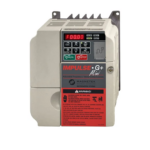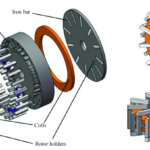If something can’t go on, it won’t; supplying the automobile’s voracious electrical demands from a 12-V battery is an example of this reality.
If you haven’t already, check out Part 1 and Part 2 of this discussion.
Under the zonal architecture, many legacy loads will still be supported by a 12-V battery or its functional equivalent derived from a 48-V battery. In the mild-hybrid system, a 48-V battery is used alongside the traditional 12-V battery; in a full-hybrid design, the 12-V battery is eliminated, and 12 V is derived from the 48-V battery.
However, it may be possible to eliminate not only the 12-V battery in EVs/HEVs but also the 48 V battery. All the lower-voltage rails can be derived from the higher-voltage vehicle battery packs (presently either 400 V or 800 V).
Some insight on the advantages of going “full zonal” by eliminating the 12-V battery and even the 48-V battery comes from Vicor Corporation, a leading proponent and manufacturer of the DC/DC converters, which are critical to the implementation. While there are various sets of numbers depending on the installation specifics, even one example of replacing a 12-V PDN with 48 V clearly indicates the magnitude of the benefits with respect to cabling weight, PDN efficiency, and other aspects of this new approach (Figure 1).

Eliminating the separate 12-V battery and relying solely on the 48-V battery achieves substantial, quantifiable savings (Figure 2).

Key to this battery elimination is the availability of small, efficient DC/DC converters, which regulate the 48-V output down to 12 V and can be located closer to the load rather than at the 48-V battery. This reduces cabling losses while supporting legacy 12-V loads if needed.
A good question is: why not try to eliminate the 48-V battery as well? That would save further space, reduce weight, and cut costs (Figure 3).

If this idea is so attractive, why hasn’t it been adopted sooner? There are several reasons:
Long-established legacies are difficult to displace, especially when the supply chain, manufacturing, costing, and post-sales support considerations are well known. Eliminating lower-voltage batteries is a major shift in PDN strategy and execution.
The need has increased dramatically in the last few years and looks to be getting more intense, but it hasn’t yet reached an insurmountable limit.
The new solution must not only be electrically superior but also offer lower volume, weight, and cost numbers than the batteries and power regulators it replaces.
Finally, the technical capabilities of the available DC/DC converters and regulators were not adequate.
The last point most immediately affects designers, as the proceeding is useless if the essential building blocks are not available and credible. Of course, these converters must be cost-effective and reliable.
In one analysis, Vicor shows a centralized PDN with losses of 180 W has its losses reduced to 45 W with a 94% efficient converter by using a decentralized system. While that is certainly impressive, it still may not be enough to justify the transition. However, by using their 98% efficient convert, the losses are cut to just 15 W, which is nearly an order of magnitude improvement. This is in addition to weight and volume savings.
In addition to efficiency, there’s another DC/DC converter consideration related to transit response. Batteries have a fairly good response to load transients (primarily sudden surges), which are a natural and unavoidable aspect of automobile operation. Their transient response is limited by their internal resistance and the resistance and inductance of the cables.
Until recently, the transient response of the DC/DC converter in dynamic load conditions was not fast enough. Unlike batteries, they are closed-loop designs that rely on feedback to slew properly and crisply. New converter designs, however, have overcome this limitation (Figure 4).

Another good question is this: why even support 12-V at all? Wouldn’t it make more sense to run everything on 48 V except, of course, for the traction motors? Again, the answer is mostly tied to legacy considerations, but some auto companies are not constrained by that factor to the same extent. For example, beginning with their just-announced Cybertruck, Tesla plans to switch to 48 V for all non-motor power and eliminate entirely the need for a 12 V source or PDN.
Conclusion
Zonal power for automotive power distribution topology is a concept whose time is coming. The increasing electronic-power demands within autos, plus advances in DC/DC technology, make it both necessary and achievable and doable.
The classic solo 12-V battery is on the way out, with 48-V supplanting it and even taking its place. In some cases, there will be a tangible 48-V battery, but for EVs and HEVs, it may be a 48-V rail derived from a 400 V/800 V battery pack. Many of the rules of thumb, guidelines, legacy components, and approaches to powering the car will be changing dramatically, and new thinking and perspectives will be needed.
Related EE World content
FAQ on magnetos for power and ignition, Part 1
FAQ on magnetos for power and ignition, Part 2
FAQ on traction motors, part 1
FAQ on traction motors, part 2
FAQ on traction motors, part 3
End-to-end connector portfolio meets needs of 48-V vehicle electrical systems
Boosting performance in 48-V power distribution
Autonomous Technology’s Growing Influence On Revamping Vehicular Electric Systems
Optimizing power delivery networks
External references
Cadence Design Systems, “What Is Zonal Architecture? And Why Is it Upending the Automotive Supply Chain?”
Vicor Corp., “48V systems: What you need to know as automakers say goodbye to 12V”
Vicor Corp., “Electric Vehicles: 48V is the new 12V”
Vicor Corp., “Tesla Cybertruck will eliminate 12V electrical components”
TE Connectivity, “Connectivity in Next Generation Automotive E/E Architectures”
Infineon, “Automotive power distribution system”
Clore Automotive, “The Evolution of the Automotive Battery”
Continental Battery Systems, “Car Battery Evolution – From Old-Tech to MIXTECH”
MDPI, “Characteristics of Battery Management Systems of Electric Vehicles with Consideration of the Active and Passive Cell Balancing Process”
ResearchGate, “A Systematic Approach to the Development of the Automotive Electrical Power System Architectures”
Inside EVs, “Tesla Confirms The Switch To 48 Volt System”
Texas Instruments, “Processing the Advantages of Zone Architecture in Automotive”







Leave a Reply